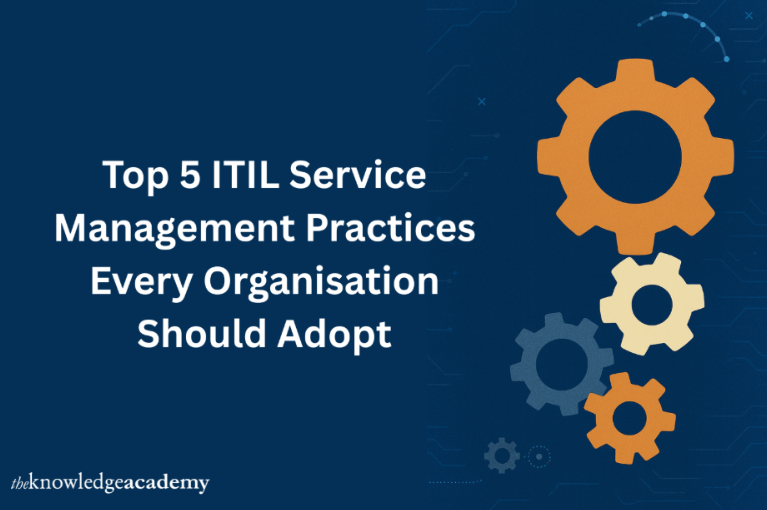In today’s business world, companies need to offer services that are dependable, quick, and of the best quality. ITIL or Information Technology Infrastructure Library, is a framework that is known around the world for helping businesses improve their IT service management operations.
An ITIL Certification can assist people improve their IT service management abilities and make sure their company stays competitive in this way. Let’s look at the 5 best ITIL Service Management practices that every business should use to improve the quality of its services and the efficiency of its operations.
Table of Contents
- Incident Management: Swiftly Resolving Disruptions
- Problem Management: Identifying Root Causes and Reducing Recurrence
- Change Management: Efficiently Managing Service Changes
- Service Level Management: Setting Clear Expectations
- Continual Service Improvement: Never Stop Improving
- Conclusion
1. Incident Management: Swiftly Resolving Disruptions
One of the most important ITIL principles is incident management. Its main goal is to get things back to normal as quickly as possible after something bad happens. An incident can be as small as a system freeze or as big as a service going down. The goal is to have as little downtime as possible that disrupts the business and its users as less as possible.
With a good incident management system, companies can fix service issues quickly and keep their doors open. IT teams should also be able to keep track of and record incidents so that they can find trends and stop the same problems from happening again.
2. Problem Management: Identifying Root Causes and Reducing Recurrence
Problem management is similar to incident management, but it takes a more strategic approach by finding the core causes of incidents and attempting to stop them from happening again. The approach includes looking at incidents that happen again and again and coming up with long-term fixes to deal with the root causes.
If organisations don’t know how to deal with problems, they may have the same ones over and over again, which can lower productivity. Organisations may lower the amount of problems, make services more reliable, and make the overall customer experience better by using a proactive problem management strategy.
3. Change Management: Efficiently Managing Service Changes
You have to deal with change all the time in the IT world. Change management makes sure that things like adding new hardware, updating software, or changing policies go smoothly and don’t get in the way of normal business.
Change management’s job is to make sure that changes are well-thought-out and carried out with little risk. If you don’t handle changes properly, they can break systems and even delete data.
4. Service Level Management: Setting Clear Expectations
Service Level Management or SLM makes sure that both IT service providers and customers know what to anticipate from the service. This technique is all about making sure that agreed-upon standards are always fulfilled, setting clear and measurable service levels, and making sure that everyone knows what is expected of them.
SLM means making Service Level Agreements or SLAs that spell out the services that will be offered, the quality levels that are expected, and the delivery times that everyone agrees on. Companies can set clear expectations for both customers and service providers by defining these SLAs. This will lead to greater communication and happier customers.
5. Continual Service Improvement: Never Stop Improving
Continual Service Improvement is a continuing endeavour to evaluate and better services over time. This ITIL practice stresses how important it is to always check on and evaluate services to find ways to make them better.
CSI is a methodical way to measure how well a service is working and make changes that make the service better. This approach pushes businesses to be flexible, always adjust to changing company needs, and provide better services that match client expectations.
Conclusion
Any business that wants to improve its service delivery and make customers happier needs to use ITIL service management standards. Implementing these ITIL practices not only boosts operational efficiency but also aligns IT services closely with business goals. The Knowledge Academy offers comprehensive ITIL courses to help you build and refine your service management skills, ensuring your organisation is equipped to thrive in a constantly evolving landscape.


